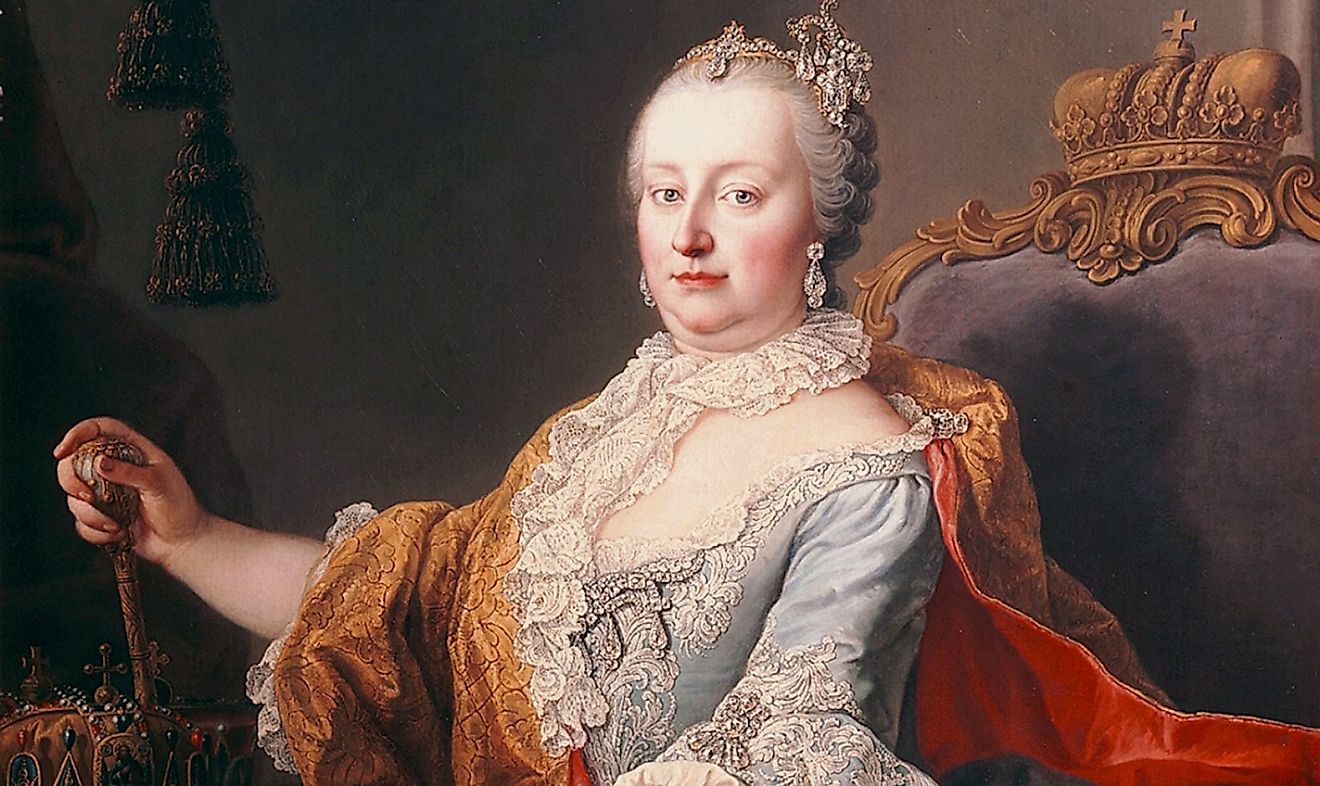Empress Maria Theresa - World Leaders in History

5. Early Life
The eldest daughter of Holy Roman Emperor Charles IV and his wife Elizabeth of Brunswick-Wolfenbüttel was born in Vienna, Austria on the 13 May 1717. Maria Theresa was born into one of the most important royal houses of Europe: the Habsburg. The throne of the Holy Roman Emperor was occupied continuously by the House of Habsburg since 1438 until 1780 with the death of Maria Theresa. At the time of her birth, females were not allowed to inherit the throne. However, Charles IV managed to gain endorsement for the Pragmatic Sanction which changed the law of inherited power. Despite the fact that Maria Theresa was to inherit and assume the throne of the Habsburgs, she was not educated or prepared to rule the state but was instead given frivolous instructions befitting a young noblewoman. In 1736, Maria Theresa married Francis Stephen of Lorraine. She married for love rather than political gains, and the couple had 16 children. Notably, their youngest daughter was Marie Antoinette, who would later marry the French king Louis XVI and be executed during the French Revolution.
4. Rise to Power
At the young age of 23, Maria Theresa’s father died in October of 1740 and she assumed the throne of the House of Habsburg, making her husband a co-regent. Not having any preparation for the tasks at hand, Maria Theresa soon discovered that her father had left the empire in a state of economic distress and with much civil unrest. Although her subjects accepted her, she was faced with resistance from several European powers who formed a coalition against her. A War of Austrian Succession broke out before the end of 1740 and lasted until 1748. However, Maria Theresa was determined to focus on strengthening her state and defeating Prussia, who had invaded Silesia at the start of the war. Though she managed to keep her throne at the end of the war, Prussia managed to hold onto and incorporate Silesia. Recognizing that she had lost Silesia to the Prussians, she set about reforming her empire until she had doubled the number of troops and gained much-needed ground economically. In 1756, the Seven Years' War with Prussia began. The Empress’ attempt to reconquer Silesia resulted in much bloodshed and ended in 1763 with the signing of the Treaty of Hubertsberg and the painful acknowledgement that Silesia was lost forever.
3. Contributions
Many of Maria Theresa’s reforms enabled the state to prosper and progress in many ways. Early reforms not only strengthened her military, but also managed to double the state revenues between 1754 and 1764. Additionally, she enlarged the country to the size of an empire through the wise and advantageous political marriages of her daughters, rather than through war. High on her list was replacing capital punishment with forced labor and abolishing witch-burnings and various tortures. With bureaucratic efficiency, the Empress created a State Council with a State Chancellor, three high nobles and three knights to help with advice. She recruited a physician who founded the Vienna General Hospital and helped inaugurate inoculations for smallpox after an outbreak in 1767, as well as initiating a study on infant mortality. In 1775, a new school system was established. Based on the Prussian system, Maria Theresa required all children, both genders, to attend school between the ages of 6 and 12. It came with mixed success, but it certainly made a positive statement for the inclusion and beginnings of educating women.
2. Challenges
Certainly stepping onto the throne with absolutely no preparation as the first and only female in the Habsburg dynasty to inherit an empire was a harsh and startling challenge. One great challenge to her personal life was the unexpected death of her beloved husband in 1765. Maria Theresa was devastated. She painted her walls black and dressed in mourning clothes for the remaining 15 years of her life.
1. Death and Legacy
Signing the Treaty of Teschen was the final and one of the most important acts of Empress Maria Theresa’s reign. The treaty signed on 13 May 1779 averted what might have been a significant war with Prussia. In the fall of 1780, she became ill and died on 28 November 1780. She was a loving and caring mother and a courageous and forward-thinking ruler who left behind viable and sensible reforms that became the foundation of a nation. Maria Theresa’s son, who had been a querulous co-regent to her, assumed the throne and became the Holy Roman Emperor Joseph II. and the House of Habsburg became the House of Habsburg-Lorraine.











